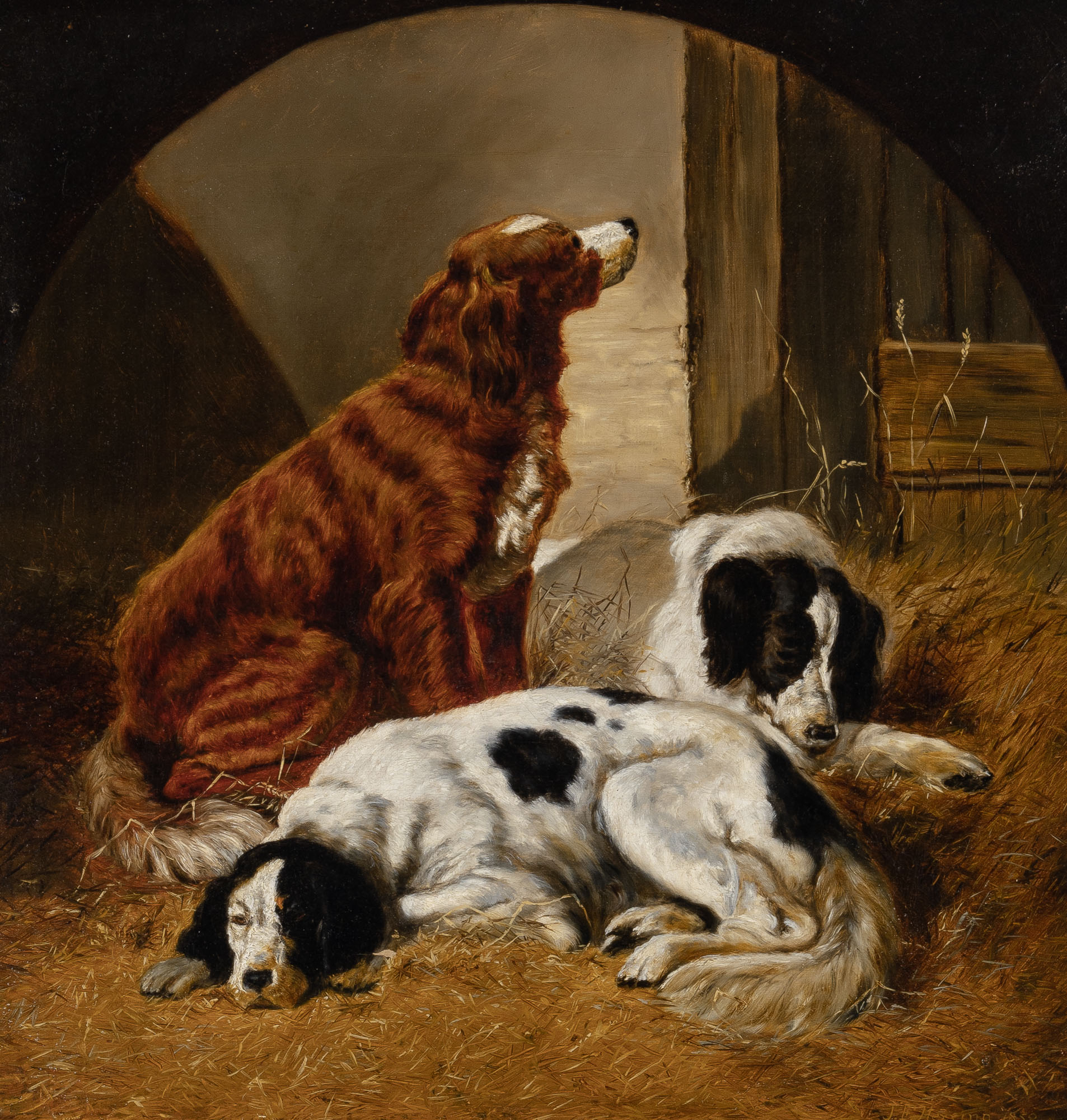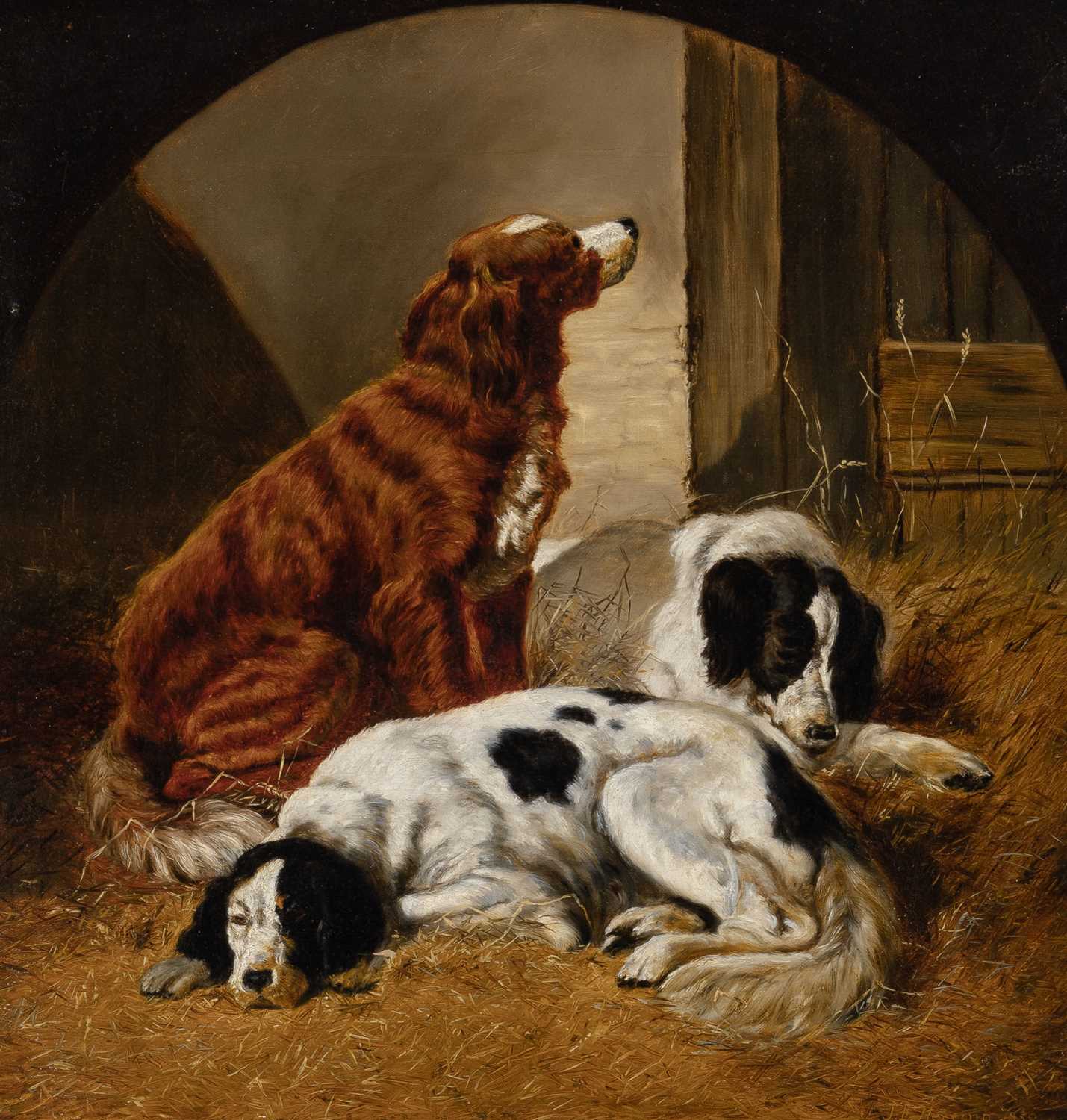
John Frederick Herring, Jnr.
British, 1815-1907
John Frederick Herring, Jr. was an English painter celebrated for his contributions to sporting and animal painting, particularly scenes featuring horses, livestock, and pastoral life. Born in Doncaster into a family of artists—his father, John Frederick Herring, Sr., was a renowned equestrian painter—Herring, Jr. developed his skill early within an environment steeped in the traditions of rural and aristocratic imagery.
While initially influenced by his father’s style and subjects, Herring, Jr. gradually expanded his focus beyond the stable and racetrack. His mature compositions embraced broader farmyard scenes, riversides, and countryside settings. These were often populated with horses, cattle, sheep, and poultry, rendered with confident brushwork and a keen sense of atmosphere. Herring, Jr.'s paintings are distinguished by a natural palette, balanced compositions, and an ability to convey the rhythms of rural English life.
Herring, Jr. achieved success in his own right, exhibiting at major venues including the Royal Academy, and earning a lasting place in 19th-century British art. His legacy lies not only in the continuation of a family tradition, but in the distinctive sensibility he brought to the everyday beauty of the countryside.




